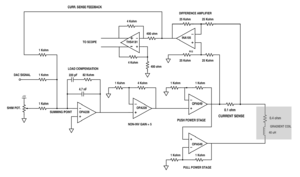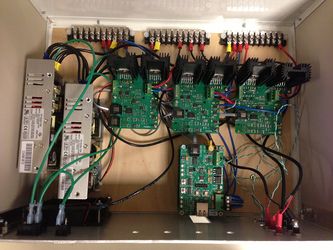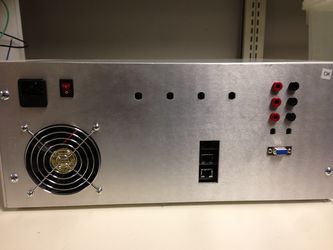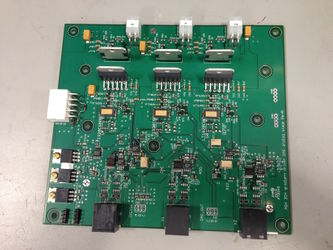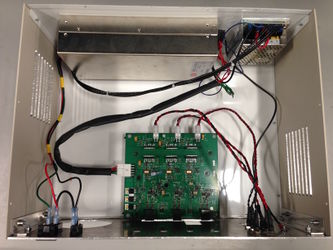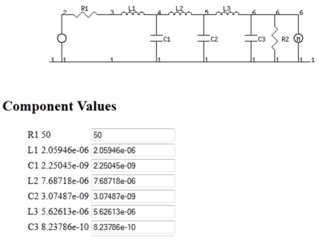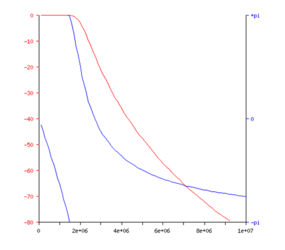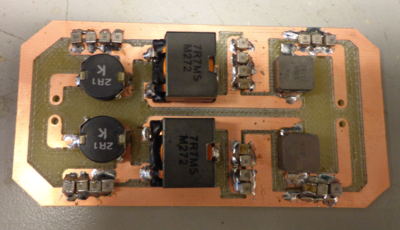Difference between revisions of "Hardware:GPA"
| Line 43: | Line 43: | ||
== Version 2 of the GPA board == | == Version 2 of the GPA board == | ||
| − | Version 2 of the board differs from Version 1 in the following ways: (a.) a slightly simplified analog stage, (b.) on-board DACs, and (c.) the integration of three channels onto a single PCB. The analog stage still uses two OPA549 power op amps in a push-pull configuration. But instead of a summing point op amp (as in V1), two feedback loops are used across the current sense resistor. The circuit specifications and performance are described in more detail in an ISMRM abstract: [http://cds.ismrm.org/protected/16MPresentations/abstracts/1157.html Arango et al., ISMRM 2016, p. 1157]. [https://tabletop.martinos.org/images/6/62/Arango_1157_8ch_shim_board_FINAL.pptx Click here] to download slides from the ISMRM talk. | + | Version 2 of the board differs from Version 1 in the following ways: (a.) a slightly simplified analog stage, (b.) on-board DACs, and (c.) the integration of three channels onto a single PCB. The analog stage still uses two OPA549 power op amps in a push-pull configuration. But instead of a summing point op amp (as in V1), two feedback loops are used across the current sense resistor. The circuit is designed to run on a 14V-to-24V supply rail, with higher rail voltages providing faster gradient slew rates for a given load inductance. The circuit specifications and performance are described in more detail in an ISMRM abstract: [http://cds.ismrm.org/protected/16MPresentations/abstracts/1157.html Arango et al., ISMRM 2016, p. 1157]. [https://tabletop.martinos.org/images/6/62/Arango_1157_8ch_shim_board_FINAL.pptx Click here] to download slides from the ISMRM talk. |
| − | [[File:V2 gpa single channel schematic.png| | + | [[File:V2 gpa single channel schematic.png|500px|thumb|left|Analog stage schematic for GPA Version 2. Stability is ensured by compensating the gradient coil load inductance using a lead compensator in the feedback loops. To compensate different loads, only two capacitors need to be changed as indicated in the yellow box. Circuit was designed and laid out by Jacob White and Nicolas Arango at MIT.]] |
| − | |||
| − | |||
| − | |||
| Line 63: | Line 60: | ||
| − | + | ''Known bugs in Rev B of board'': LT1910 current sense buffer op amp is not working and requires debugging. The positive rail of the op amp is connected to the +24V rail instead of the regulated +12V rail. | |
== Gradient Filter == | == Gradient Filter == | ||
Revision as of 20:20, 6 August 2016
Gradient Power Amplifier
The gradient amplifier is used to supply the current to the gradient coils. Since it's the fields we care about, and the fields are proportional to current, this amplifier can be viewed as a voltage to current transducer; it takes a voltage waveform from the console and creates a current proportional to that voltage in the gradient coil. It is similar to a common audio power amplifier except that it must also be able to output DC currents. It uses two OPA 549 power op-amps in a bridged configuration. A current sensor compares the output current to the input voltage to ensure that the current itself is proportional to the desired signal. The current sensor consists of an INA105 differential amplifier that measures the voltage across a small (0.1 ohm) resistor in series with the output. The OPA549s can provide up to 8 amps of current, but in practice the current is limited by the duty cycle of the gradient waveform in the pulse sequence and the size of the heat sink used on the boards.
Two versions of the board have been used with the tabletop scanner. Version 1 used separate digital-to-analog converter (DAC) boards and provided one output channel per GPA board. Version 2 simplified the wiring and reduced costs by placing three channels with integrated DAC stages onto a single PCB. Version 2 is plug-and-play compatible with the MEDUSA console digital gradient waveform output lines (RJ45 connector).
Email jaystock@nmr.mgh.harvard.edu with any questions.
Version 1 of the GPA board
Click here to view the schematic for the GPA boards generated in Eagle (version 6). Note that a separate A/D converter was used in the initial realization of the boards (DAC on the GPAs was not populated).
Click here to download Eagle version 6 board (.brd) and schematic (.sch) files for the V3 GPA board (does not include on-board DAC).
- Gradient Power Amplifier enclosure
GPA boards mounted in enclosure with power supplies, terminal blocks, and digital-to-analog converter boards. The boards were run on bipolar +15V and -15V rails provided by CUI switching supplies. On-board regulators provide +12V, -12V, and +5V for powering the small ICs. The +12V fan is powered by a small JST connector on the CUI supplies.
Aluminum front panels were made using a water-jet cutter. Hammond NHC-14157 enclosures were used to house the GPAs and DACs. Click here for DXF file for front panel cut-outs. Note that Version 2 of the GPA board requires a horizontal slot for the RJ45 connectors instead of the vertical slot used here.
Version 2 of the GPA board
Version 2 of the board differs from Version 1 in the following ways: (a.) a slightly simplified analog stage, (b.) on-board DACs, and (c.) the integration of three channels onto a single PCB. The analog stage still uses two OPA549 power op amps in a push-pull configuration. But instead of a summing point op amp (as in V1), two feedback loops are used across the current sense resistor. The circuit is designed to run on a 14V-to-24V supply rail, with higher rail voltages providing faster gradient slew rates for a given load inductance. The circuit specifications and performance are described in more detail in an ISMRM abstract: Arango et al., ISMRM 2016, p. 1157. Click here to download slides from the ISMRM talk.
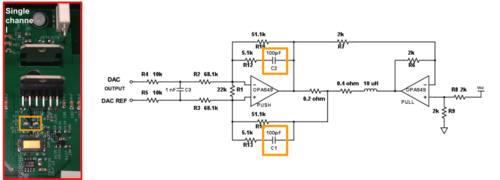
[GPA_3ch_tabletop_shimboard_RevB_V8_2.zip Click here] to download Eagle version 6 board (.brd) and schematic (.sch) files for the GPA board with on-board DACs (Rev B).
- 3ch GPA board and enclosure
Known bugs in Rev B of board: LT1910 current sense buffer op amp is not working and requires debugging. The positive rail of the op amp is connected to the +24V rail instead of the regulated +12V rail.
Gradient Filter
6th order butterworth low pass filters were added to the lines leading to the gradients.
The final version of these files can be downloaded as Eagle 5.11.0 and Gerber (for having the boards manufactured).
Note: Inductors were selected based on lead time and inductance and NOT on the package. Any inductor with similar inductance would work. The board was specifically designed for the following: 2.1 uH, 7.7 uH and 5.6 uH.
Note: All capacitor pads are for a 1206 package. There are four pads at each spot to allow for using multiple capacitors to obtain the specified value.
